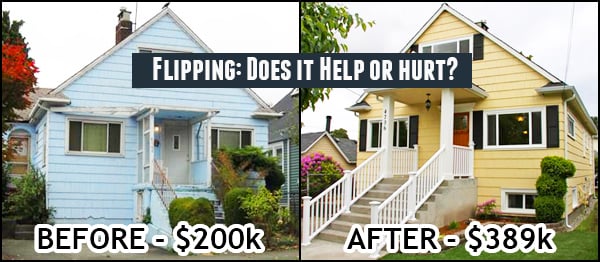The Guide to Working with a Realtor

The Guide to Working with a Realtor
I intend to start working with a US broker in the partnership for Philip,
I bring the money and it does the work (purchase, engineering review, renovation and sale). How is it common to divide the profit between the purchase and sale between us? In such a situation, is it customary to pay brokerage fees separately for buying and selling? What are the usual US fees?
Thanks for the answers
The original responses to the post can be read at the bottom of the current post page on the site or in the link to a post on Facebook and of course you are invited to join the discussion
- I come from another world and not give a recommendation to these idea.
In principle, a working person deserves a fee and therefore he deserves a work allowance.
To the investor, interest comes.
Once you clear these costs, publishers deserve a profit. - We'll divide it in half
In the US it works a little differently than in the country. Accepted brokerage fees are 6% on sale, and no brokerage fees are purchased. It is rewarded by the seller's realtor
For the part of the flip, it's a different story already - everything that fits both sides revolves. Basically the right model in my opinion is to create a unity of interests. That is to reward it as a percentage * of profit * - I have a local partner in the US. I demanded that he be entitled to 50 percent of the profit in flip deals. My first interest is that he will earn and bring me the best deals…
- In the buying phase, he will be rewarded with 3% of the purchase price paid by the seller who pays 6% divided by half and half between the seller's broker and the buyer's broker. In the sale you will have to pay 3% to the buyer's broker. Now you can decide how to divide the profit. In my opinion it has to do with the size of the project. In a project where the profit is 30,000 then 20% for it is fine and nothing more. On the other hand if the profit is 100,000 then 20% will put it in full interest and interests with you. Successfully!
- I have a local partner, who receives 50% of the profit, pays him a favor, he locates the deal, takes care of the building / renovation, it is clear that he is reliable and professional in the field
- Friends
I was smart! Thanks
I would be happy to receive further answers - In fact, what you describe seems to me just like a case of an Israeli entrepreneur doing a flip for an investor. For that matter I locate a flip deal, do all the work and you put the money in ... I see no difference whether the entrepreneur is American or Israeli ...
In my opinion, any division between 30-50% (for the entrepreneur) seems logical to me and provided you agree to it of course - This is indeed an Israeli with an American license
- I work with American partners who are actually entrepreneurs. Find a property, a private lender, are responsible for renovations, a contractor, and actually manage everything from A to Z. We organize only the cash needed to close. Dividends are given 60%.
On the other hand I am in another area working with a real estate agent who receives 3% (from the seller of course), current expenses during the project, 6% in the sale and distribution of profits 15% on the project management. - The entrepreneur pays a certain amount for current expenses for supervising the whole process (around the 3-5 percent) and then at the end The entrepreneur divides the investor with 70-30 earnings (70 per investor) when there is an investor priority of 10-12 per cent per year.









































Thanks
The entrepreneur pays a certain amount for current expenses for supervising the whole process (around the 3-5 percent) and then at the end The entrepreneur divides the investor with 70-30 earnings (70 per investor) when there is an investor priority of 10-12 per cent per year.
I work with American partners who are actually entrepreneurs. Find a property, a private lender, are responsible for renovations, a contractor, and actually manage everything from A to Z. We organize only the cash needed to close. Dividends are given 60%.
On the other hand I am in another area working with a real estate agent who receives 3% (from the seller of course), current expenses during the project, 6% in the sale and distribution of profits 15% on the project management.
This is indeed an Israeli with an American license
This is indeed an Israeli with an American license
In fact, what you describe seems to me just like a case of an Israeli entrepreneur doing a flip for an investor. For that matter I locate a flip deal, do all the work and you put the money in ... I see no difference whether the entrepreneur is American or Israeli ...
In my opinion, any division between 30-50% (for the entrepreneur) seems logical to me and provided you agree to it of course
In fact, what you describe seems to me just like a case of an Israeli entrepreneur doing a flip for an investor. For that matter I locate a flip deal, do all the work and you put the money in ... I see no difference whether the entrepreneur is American or Israeli ...
In my opinion, any division between 30-50% (for the entrepreneur) seems logical to me and provided you agree to it of course
Friends
I was smart! Thanks
I would be happy to receive further answers
Friends
I was smart! Thanks
I would be happy to receive further answers
I have a local partner, who receives 50% of the profit, pays him a favor, he locates the deal, takes care of the building / renovation, it is clear that he is reliable and professional in the field
I have a local partner, who receives 50% of the profit, pays him a favor, he locates the deal, takes care of the building / renovation, it is clear that he is reliable and professional in the field
In the buying phase, he will be rewarded with 3% of the purchase price paid by the seller who pays 6% divided by half and half between the seller's broker and the buyer's broker. In the sale you will have to pay 3% to the buyer's broker. Now you can decide how to divide the profit. In my opinion it has to do with the size of the project. In a project where the profit is 30,000 then 20% for it is fine and nothing more. On the other hand if the profit is 100,000 then 20% will put it in full interest and interests with you. Successfully!
In the buying phase, he will be rewarded with 3% of the purchase price paid by the seller who pays 6% divided by half and half between the seller's broker and the buyer's broker. In the sale you will have to pay 3% to the buyer's broker. Now you can decide how to divide the profit. In my opinion it has to do with the size of the project. In a project where the profit is 30,000 then 20% for it is fine and nothing more. On the other hand if the profit is 100,000 then 20% will put it in full interest and interests with you. Successfully!
I have a local partner in the US. I demanded that he be entitled to 50 percent of the profit in flip deals. My first interest is that he will earn and bring me the best deals…
I have a local partner in the US. I demanded that he be entitled to 50 percent of the profit in flip deals. My first interest is that he will earn and bring me the best deals…
We'll divide it in half
In the US it works a little differently than in the country. Accepted brokerage fees are 6% on sale, and no brokerage fees are purchased. It is rewarded by the seller's realtor
For the part of the flip, it's a different story already - everything that fits both sides revolves. Basically the right model in my opinion is to create a unity of interests. That is to reward it as a percentage * of profit *
We'll divide it in half
In the US it works a little differently than in the country. Accepted brokerage fees are 6% on sale, and no brokerage fees are purchased. It is rewarded by the seller's realtor
For the part of the flip, it's a different story already - everything that fits both sides revolves. Basically the right model in my opinion is to create a unity of interests. That is to reward it as a percentage * of profit *
I come from another world and not give a recommendation to these idea.
In principle, a working person deserves a fee and therefore he deserves a work allowance.
To the investor, interest comes.
Once you clear these costs, publishers deserve a profit.
I come from another world and not give a recommendation to these idea.
In principle, a working person deserves a fee and therefore he deserves a work allowance.
To the investor, interest comes.
Once you clear these costs, publishers deserve a profit.